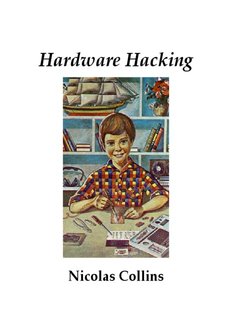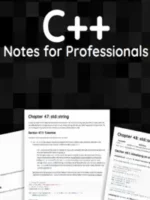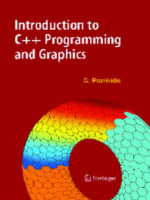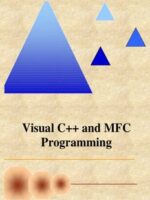Introduction
This book teaches you how to tickle electronics. It is a guide to the creative transformation of consumer electronic technology for alternative use. We live in a cut and paste world: Control-X and Control-V give us the freedom to rearrange words, pictures, video and sound to transform any old thing into our new thing with tremendous ease and power. But, by and large, this is also an “off-line” world, whose digital tools, as powerful as they might be, are more suitable to preparing texts, photo albums, movies and CDs in private, rather than on stage.
These days most “live electronic music” seems to be hibernating, its tranquil countenance only disturbed from time to time by the occasional, discrete click of a mouse. My generation of composers came of age before the personal computer, at a time when electronic instruments were far too expensive for anyone but rock stars or universities, but whose building blocks (integrated circuits) were pretty cheap and almost understandable. A small, merry, if masochistic, band, we presumed to Do-It-Ourselves.
We delved into the arcane argot of engineering magazines, scratched our heads, swapped schematics, drank another beer, and cobbled together home-made circuits most of them eccentric and sloppy enough to give a “real” engineer dyspepsia.
These folk electronic instruments became the calling cards of a loose coalition of composers that emerged in the mid-1970s, after John Cage, David Tudor, and David Behrman, and before Oval, Moby, and Mamos. By the end of the 1970s the microcomputers that would eventually evolve into Apples and PCs had emerged from the primordial ooze of Silicon Valley, and most of us hung up our soldering irons and started coding, but the odd circuit popped up from time to time, adding spice to the increasingly digital musical mix.
Computers are wonderful, don’t get me wrong, but the usual interface an ASCII keyboard and a mouse is awkward, and makes the act of performing a pretty indirect activity like trying to hug a baby in an incubator. “Alternative controllers” (such as those made by STEIM and Buchla) are a step in the right direction, but sometimes it’s nice to reach out and touch a sound.
This book lifts the baby out of the basinet and drops her, naked and gurgling, into your waiting arms, begging to be tickled.
The focus is on sound making performable instruments, aids to recording, and unusual noisemakers though some projects have a strong visual component as well. No previous electronic experience is assumed, and the aim is to get you making things as quickly as possible and keep you alive from start to finish.
After learning basic soldering skills, you will make a variety of listening devices: acoustic microphones, contact mikes, coils for picking up stray electromagnetic fields, tape heads.
Then you will lay hands upon, and modify, cheap electronic toys and other found circuitry — the heart and soul of hacking.
You’ll build some circuits from scratch: simple, robust oscillators that can be controlled through a variety of means (light, touch, knobs, switches), and combined to create rich electronic textures at minimum cost and difficulty. With the confidence instilled by such a delicious din you can proceed with circuits to amplify, distort and otherwise mangle sound You can move on to some designs for linking sound with visual material, and some convenient “glue” circuits, useful for putting disparate parts together for performance or recording.
Finally, there are several appendices to direct the reader to sources of supplies and further resources for information.
In selecting the specific projects to include in this book I was guided by a handful of fundamental assumptions and goals:
1) To keep you alive. All the projects in this book are battery powered; none plug into the potentially lethal voltage running through your walls. This makes the early stages of unsupervised electronic play activity considerably safer, and less daunting for the beginner.
2) To keep things simple. We work with a small number of very simple “axiomatic” circuits and concepts that can be combined with great permutational richness as you proceed and gain experience but are easy to understand and quick to get running at the beginning. The point is to make cool sounds as quickly as possible.
3) To keep things cheap. By limiting ourselves to a few core designs we minimize the quantity and cost of supplies needed to complete this book. You don’t need a full electronics lab, just a soldering iron, a few hand tools, and about $50- worth of parts which you can easily obtain on-line. By focusing on toys and other simple consumer electronics we also minimize the threat of “catastrophic loss” in the early, unpredictable days of freestyle hacking: a Micro jammer sets you back considerably less than a vintage Bass Balls.
4) To keep it stupid. You will find here an absolute minimum of theory. We learn to design by ear, not by eye, gazing at sophisticated test instruments or engineering texts. Ignorance is bliss, so enjoy it.
5) To forgive and forget. There’s no “right way” to hack. I will try to steer you away from meltdowns, but have included designs that are robust, forgiving of wiring errors, and accept a wide range of component substitutions if you don’t have the preferred part. Most of these circuits are starting points from which you can design many variations with no further help from me — if you love a hack, let it run free. As a result of these koans, this is a distinctly non-standard introduction to electronic engineering.
Many of the typical subjects of a basic electronics course, such as the worrisomely vague transistor and the admittedly useful little thing called an op-amp, are left unmentioned. After turning over the last page, you will emerge smarter, if weirder, than when you first opened the book.
You will have acquired some rare skills, and ones that are exceedingly useful in the pursuit of unusual sounds. You will have significant gaps in your knowledge,
6 Nicolas Collins but these gaps can be filled by a less structured stroll through resources easily available in books and on-line (as described in Appendix 1.) And everything electronic you choose to do after this book will be easy, I promise. Why? Because you will be fearless. You will have the confidence to survey those presumptuous “No user serviceable parts inside!” labels and laugh. You will be a hacker.









Be the first to review “Hardware Hacking”